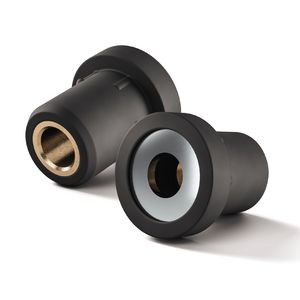
- Products
- Catalogs
- News & Trends
- Exhibitions
Fastening element with tolerance compensation FLEXITOL®


Add to favorites
Compare this product
Characteristics
- Other characteristics
- with tolerance compensation
Description
Tolerance compensation – production efficiency
The use of FLEXITOL® systems permits greater manufacturing tolerances, thereby allowing for more effective production methods.
FLEXITOL® tolerance compensation systems were developed to compensate tolerances cost-effectively and to prevent warping during assembly. A reliable process flow in series production is ensured in this way. In addition, complex adjustment processes are made more efficient.
Method / principle
Manufacturing processes, based on modular concepts, are a fundamental part of the automotive industry.
Individual components are supplied to the final manufacturer, which merely assembles them. During the development process, it is important to define appropriate tolerances to allow for series production. In this context, the FLEXITOL® automatic tolerance compensation system offers a technically optimised and cost-effective solution.
Applications
Nowadays there are many examples of modular manufacturing processes in industry – for the assembly of machine housings, drawer runners, cab linings for utility vehicles or drive units for washing machines, for example.
In the automotive industry too, FLEXITOL® ensures the necessary tolerance compensation, especially in the assembly of headlamps, rear lights, instrument panels, mudguards, door frames or roof ledges.
Product benefits
- Compensation of even relatively high manufacturing tolerances
- High functional reliability
- Access required from one side only
- Easily integrated into a wide range of applications
- Quick and easy assembly
VIDEO
Catalogs
*Prices are pre-tax. They exclude delivery charges and customs duties and do not include additional charges for installation or activation options. Prices are indicative only and may vary by country, with changes to the cost of raw materials and exchange rates.













